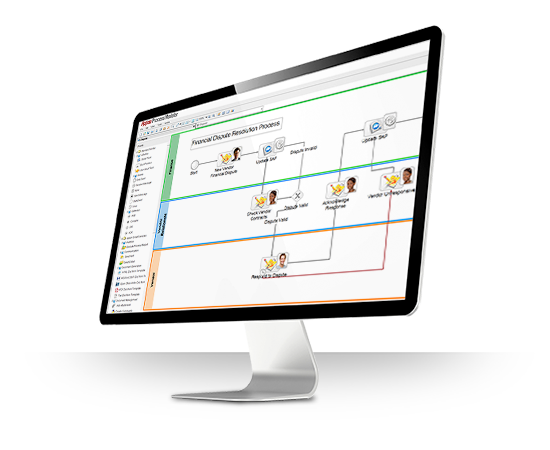Business Process Management (BPM) is defined
as the discipline of managing processes to continually improve agility and
business performance outcomes.
BPM Suite
As the value of process improvement in
business became more understood, the BPM suite emerged with comprehensive,
integrated capabilities to help organizations achieve their business goals and
solve unique challenges more quickly at a lower total cost. A more cohesive
approach to BPM than stand-alone technologies, the advanced BPM suite provides
process management capabilities needed to achieve the optimal state of
seamless, cross-functional process alignment.
There are ten critical components of a BPM
suite:
Process – Simple web-based modeling using
BPMN and SOA methodologies for rapid development and automation of business
processes.
Rules – Automate, enforce and audit policies and
practices of a dynamic rule driven process application.
Design – Rich and easy-to-use creation tools to
quickly build simple interfaces.
Forms creation – Forms creator should allow
designers to create interactive forms for users.
Analytics – Ability to track real-time
process performance, create rich reporting dashboards, identify process
bottlenecks, and optimize process efficiency flow.
Mobile – Ability to always be connected to
important processes and tasks, regardless of time, place, or device.
Content – Integrated document and content
management to store, secure, version, search and manage enterprise content for
use in business processes.
Collaboration – Instant, continuous
connections between people, processes, and information keeps the workforce
aware, engaged, and working together toward objectives.
Data Integration and Access – Converge data from across all
enterprise systems to provide complete information on any topic, available in a
single location.
SOA and Integration – Use standard SOA development
to build a repository of reusable services to accelerate BPM deployment to
address many challenges.
At a minimum, BPM software must address the
four core elements of process-based application development:
Design,
Execute, Manage, and Optimize.
Design
• Simple Business Process
Modeling Notation (BPMN) to create graphical Process Models
• Rules Engine to create required business
rules
• Intuitive designer for forms
and application interfaces
Execute
• Process
automation with enterprise-level scalability
• Comprehensive Web Services
orchestration
• Integration with other
enterprise systems
Manage
• Task and queue management
• Task and queue management
• Real-time reporting and status alerts
• In-flight process modification
capabilities, enabling managers to handle exceptions
Optimize
Ø
Business Activity Monitoring (BAM)
capabilities
Ø
Aggregate performance analysis.
Ø
Key Performance Indicators and SLA reporting
Design Processes
Execute with Ease
Manage Tasks
Continually Optimize
















